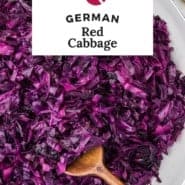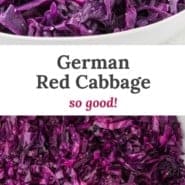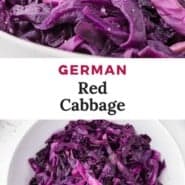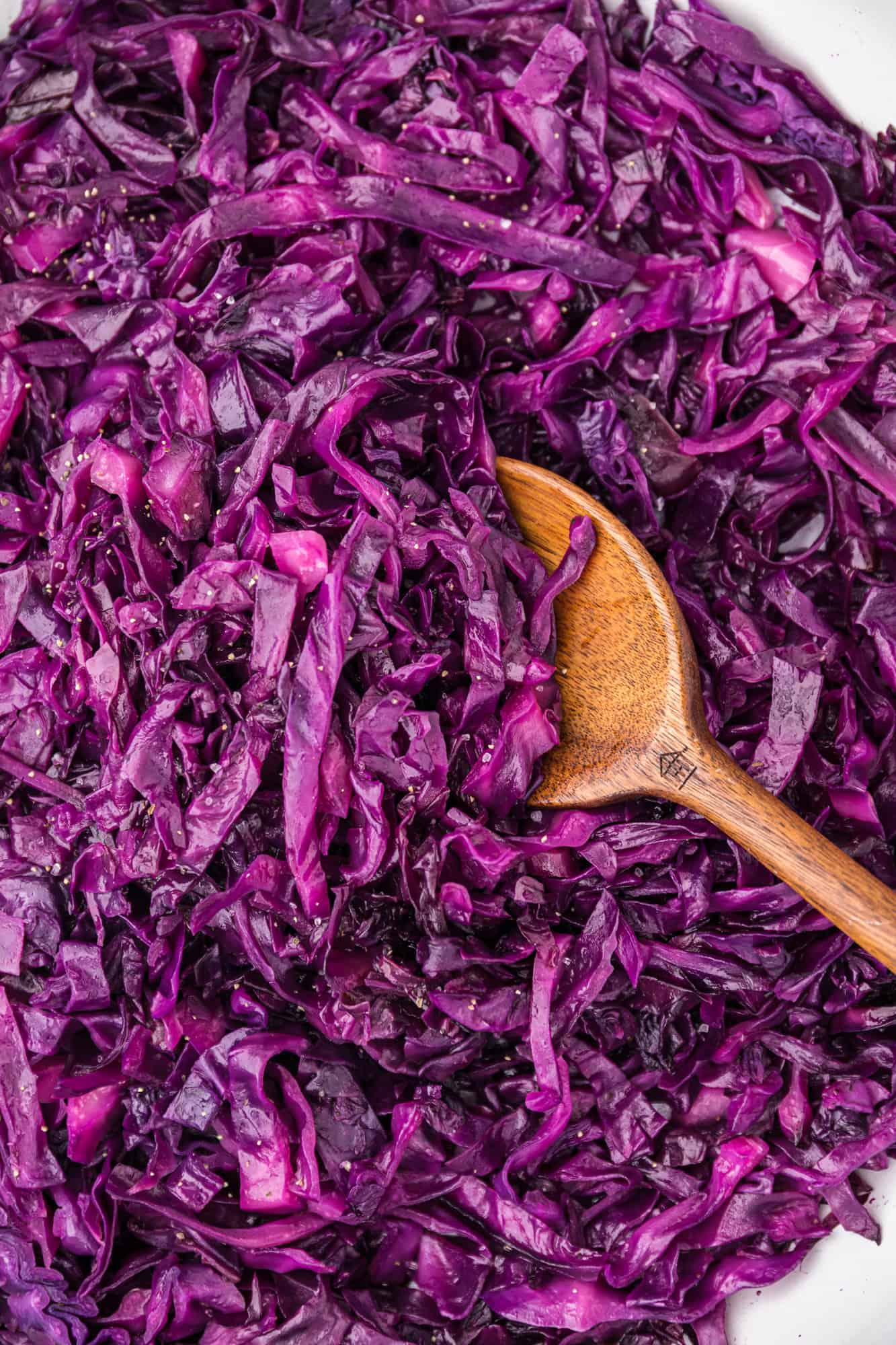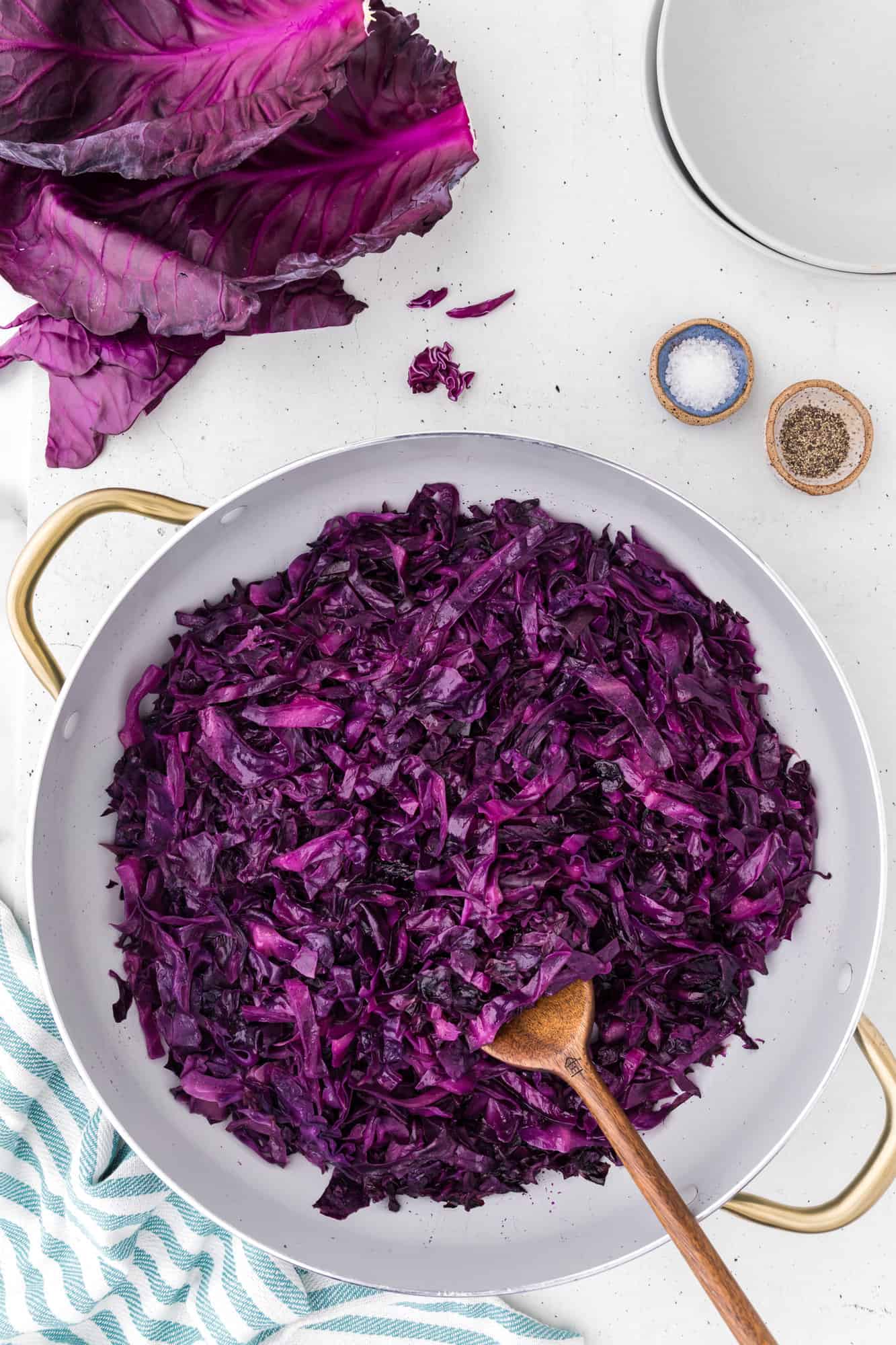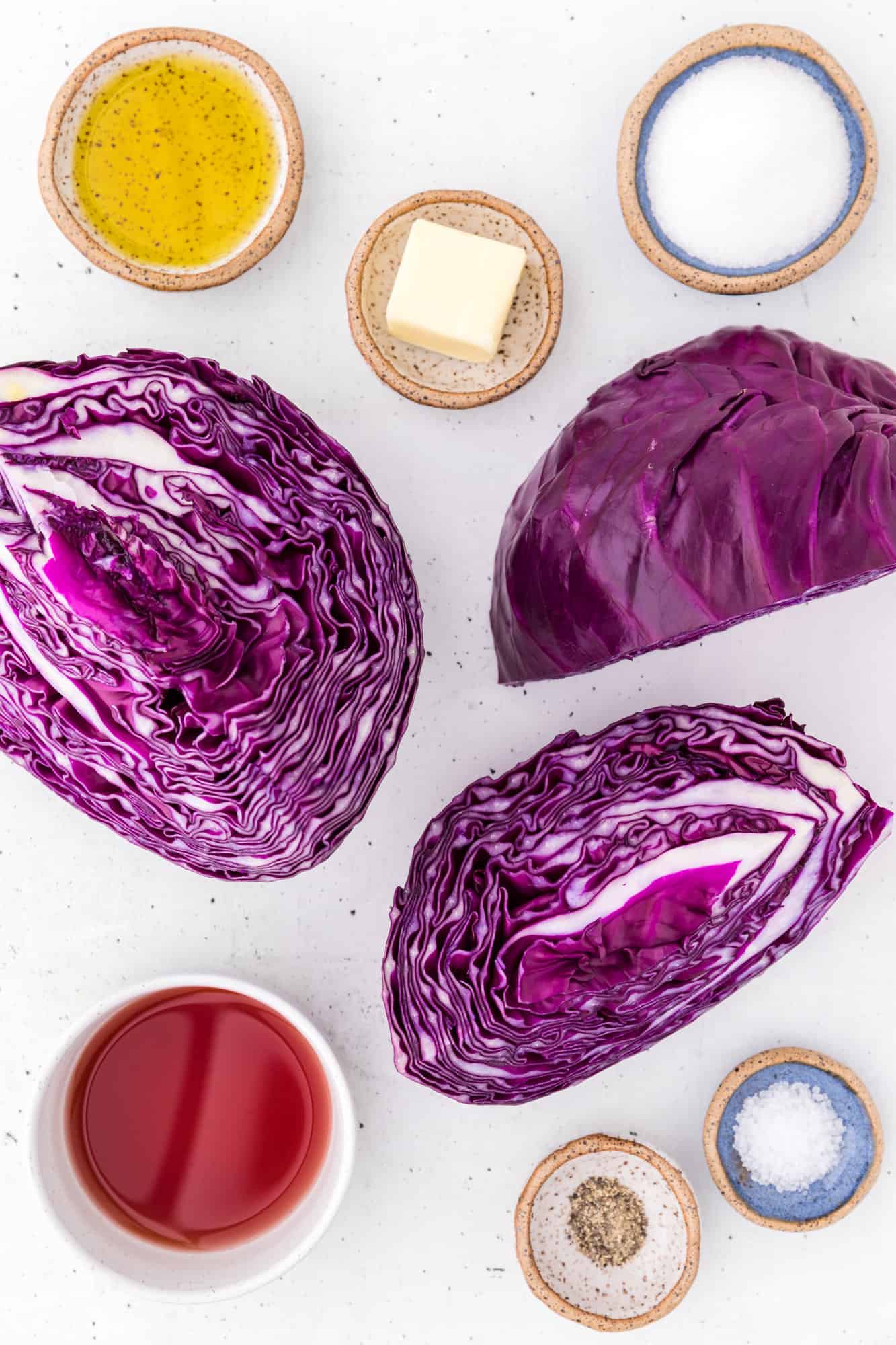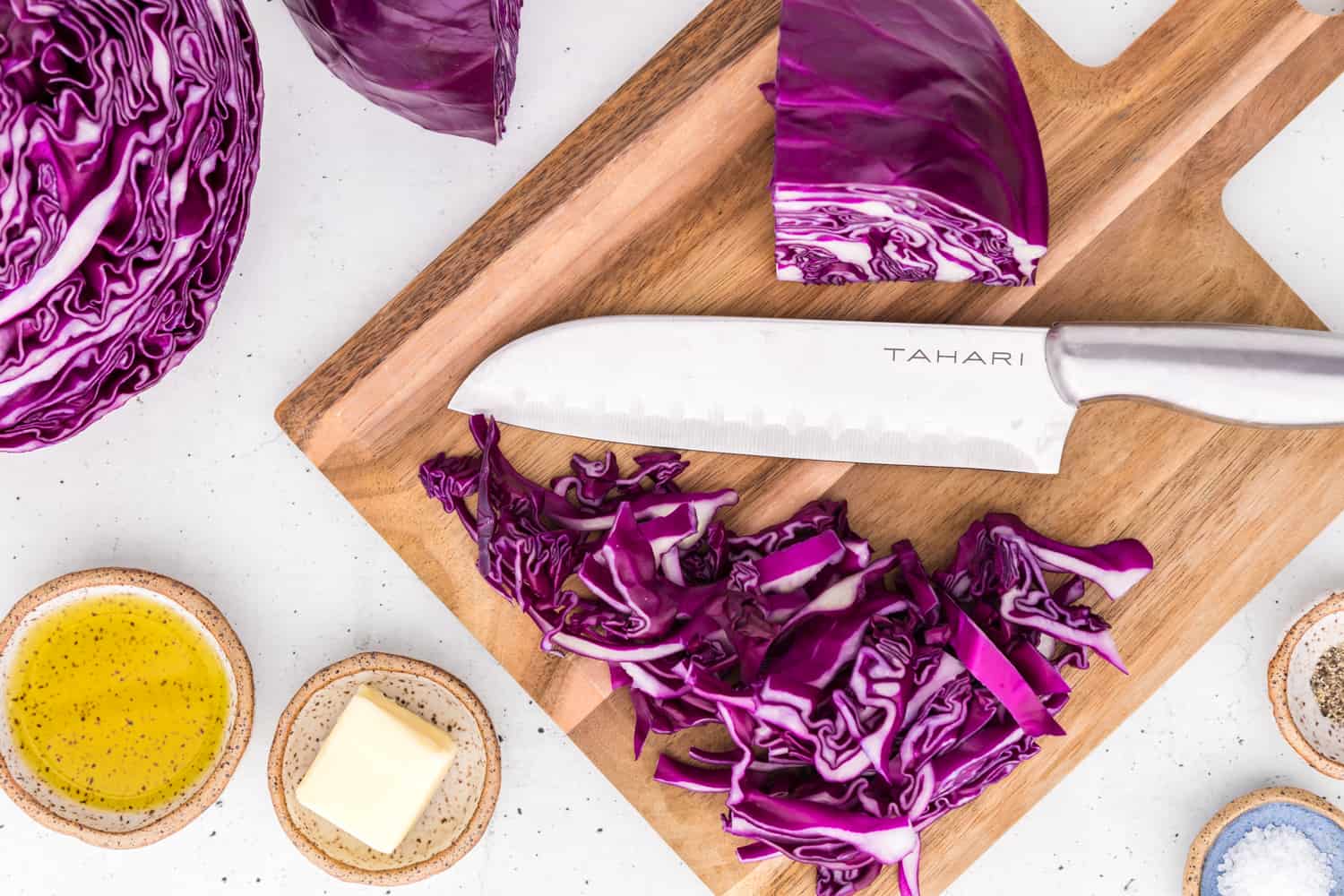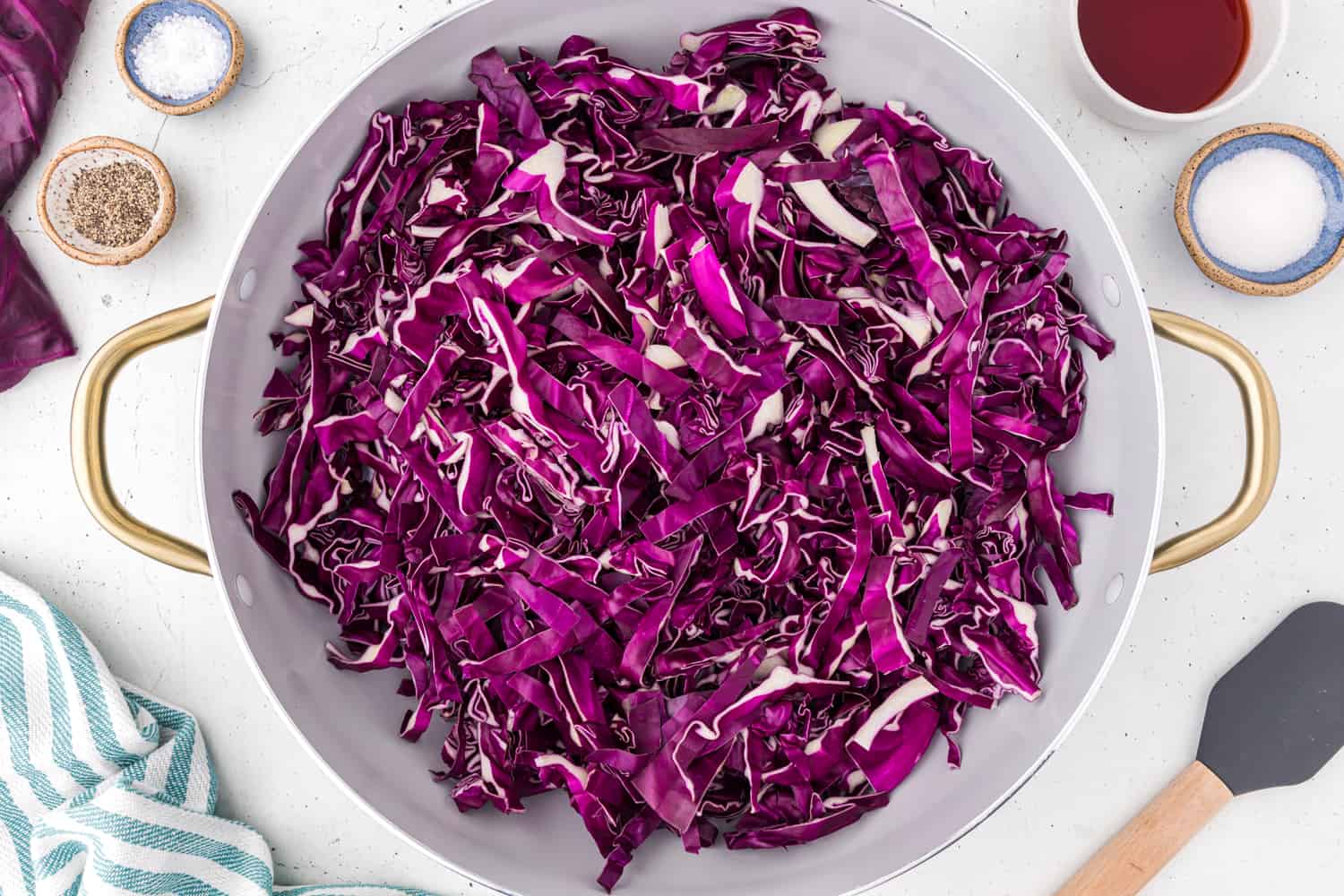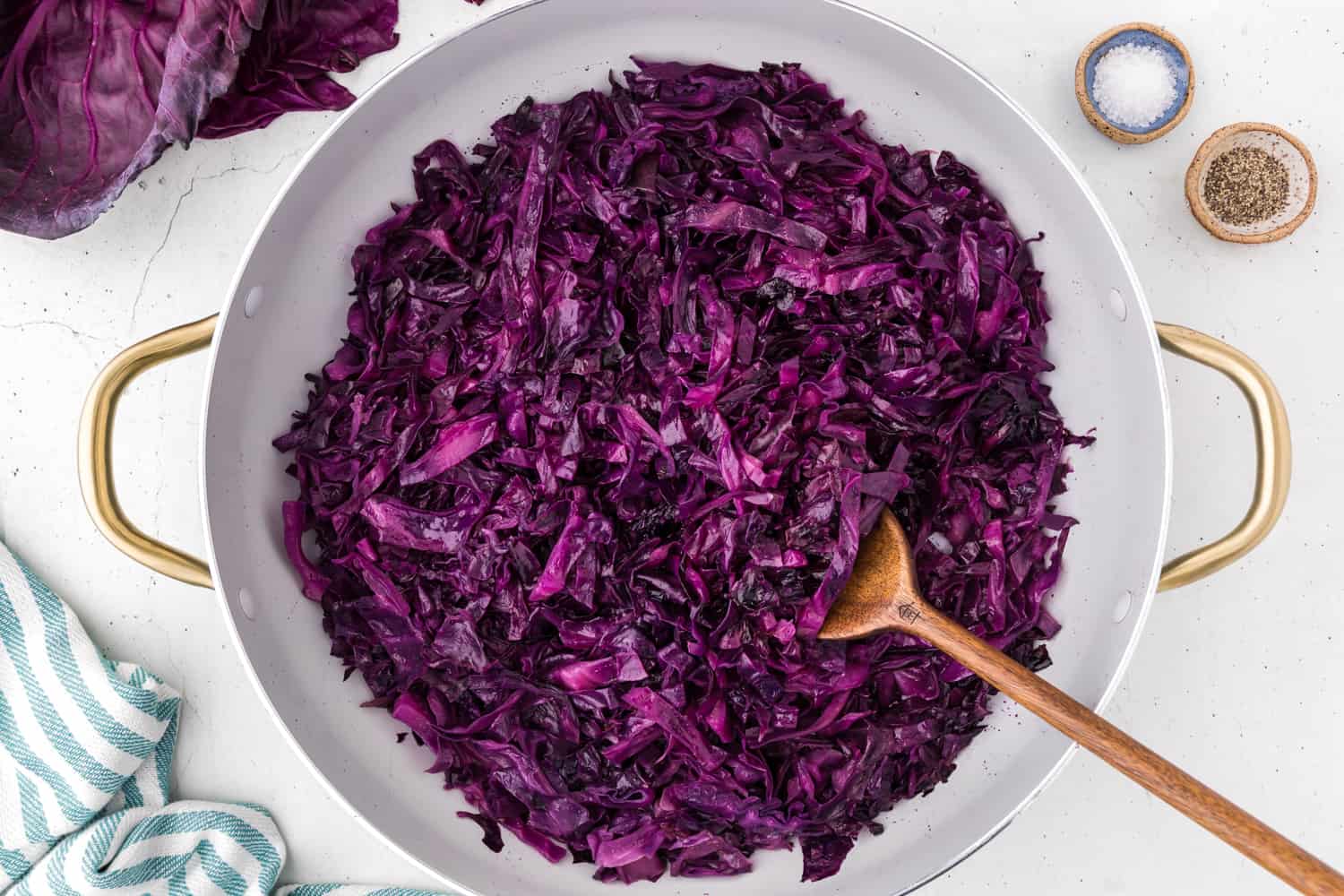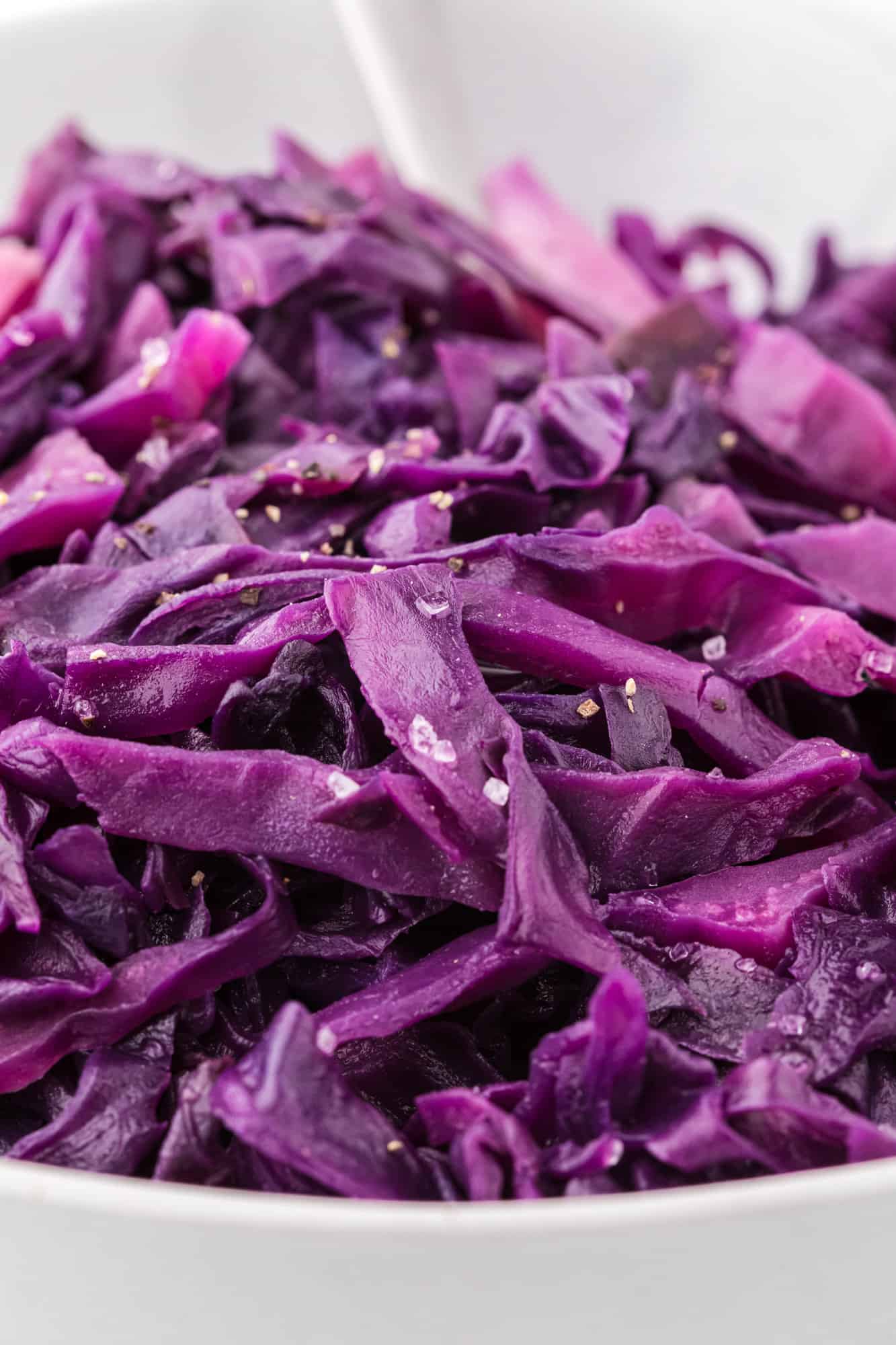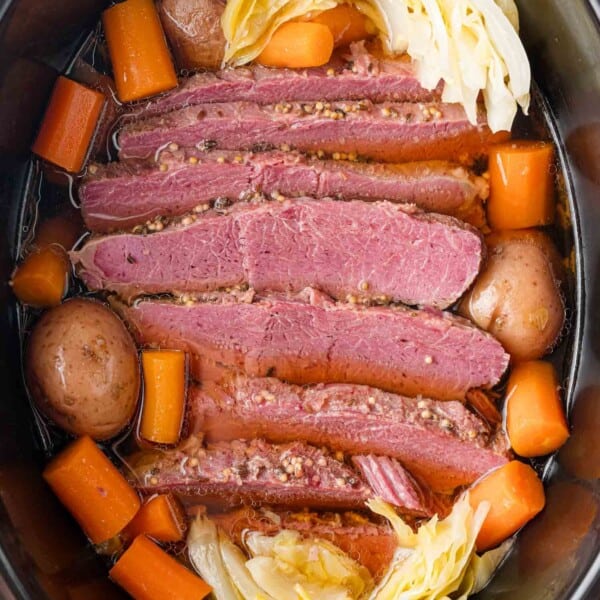I’m not sure why it’s called red cabbage. To me, it looks amazingly purple, a rather brilliant shade of purple, in fact. Not lavender or violet or mauve, it’s about as purple as it gets, both raw and cooked. How long it takes: 10 minutes to prep, 35 minutes to cook, depending on how tender you like. it. Equipment you’ll need: sharp knife, large skillet with a lid Servings: 8 It’s really quite beautiful, don’t you think? Isn’t purple a royal color? Maybe the royal people didn’t want to be associated with the humble cabbage, often considered a poor man’s food in the past, so they named it “red” instead of calling it like it really is. Anyhow, enough musing about the color. Sweet and sour red cabbage has Germanic origins. It’s often served with roasted meat, such as pork, goose, or duck. The tangy/sweet flavor complements rich meat perfectly. Red cabbage is super nutritious. It’s part of the Brassica group of vegetables, along with Brussels sprouts, broccoli, and kale. Like all dark red vegetables (be sure to try roasted beets!), red cabbage has lots of health benefits, according to Healthline. It contains 4.5 times more antioxidants than green cabbage! So, you can see, it’s a good idea to include more red cabbage in your diet, and this simple recipe is a perfect way to do it. It tastes great and you will add a little royal color to your dinner plate.
About This Red Cabbage Recipe
The red cabbage is braised for this recipe. First, it’s sautéed in a bit of oil, then slowly simmered until tender. This cooking method is often used to cook tougher cuts of meat. Try my braised lamb shanks or my Instant Pot pot roast. They turn out meltingly tender using the braising method of cooking (and would go great with this red cabbage). Why add vinegar? Adding vinegar to the red cabbage has more than one purpose. Vinegar is the tangy part of the sweet and sour flavor, and it also keeps the cabbage looking good. The compounds that give red cabbage its color and antioxidants (anthocyanins) are water-soluble. Without a mild acid like vinegar or lemon juice, the cabbage will turn an unappetizing grayish blue color. Cabbage freezes well. I didn’t know this before but you can freeze cooked cabbage, both red and green. It freezes well and you don’t even have to thaw it before you reheat it. Just put the cooked cabbage in resealable bags and it’s ready when you are. I love that idea!
What You’ll Need
Red Cabbage: Look for a head of cabbage in the produce section of your grocery store. It should feel quite heavy and very firm. The outside leaves should be shiny and crisp. You’ll need a cabbage that is about one and half pounds, more or less. If you buy an extra large cabbage and don’t use it all, use the remainder to make this cabbage salad with honey lime dressing. Olive Oil and Butter: Combining these two oils has a couple of benefits: more flavor and a higher smoke point. If you’d rather use one or the other, that will work, too. Red Wine Vinegar: This is the sour part of sweet and sour red cabbage. Red wine vinegar is tangy with a hint of sweetness. Sugar: Granulated white sugar is the sweet part. Both the vinegar and sugar are pantry staples, inexpensive and convenient. Salt and Pepper: These simple seasonings are all you need. Be fairly generous with the salt.
How To Make It
You’ll need a large skillet with a lid, or a Dutch oven. The cabbage cooks down quite a lot but when you first put it into the pan, it will fill it up. Over medium heat, melt the butter and olive oil together. When the butter is melted, add the chopped red cabbage. Season it with salt and pepper, and continue to cook, stirring frequently until the cabbage begins to wilt, about 5 minutes. Stir in the cider vinegar and sugar, and lower the heat to a simmer. Cover the pan and simmer the cabbage until it’s tender, about 30 minutes, giving it a stir now and then. How can you tell when the cabbage is tender? The best way is to take a bite and see what you think. It’s really a matter of personal preference. Some folks like the cabbage to have a crisp tender texture, with a little crunch. Others like it to be melt-in-your-mouth tender. If it’s not what you’d like it to be, give it a little more cooking time. Be sure to check the seasoning before serving the cabbage, and add more salt and/or pepper, if you like. Check out the section below if you’re wondering what to eat with your German red cabbage.
What To Serve With German Red Cabbage
Baked Breaded Pork Chops with herbs and Parmesan Breaded Air Fryer Pork Chops Instant Pot Pork Loin Roast Slow Cooker Pork Loin with balsamic glaze Pork Tenderloin Recipe with easy spice rub Pork Tenderloin with apples and onions Grilled Pork Kabobs with apples Instant Pot Short Ribs & Mashed Potatoes (at the same time!) Classic Meatloaf Recipe – the best! Parmesan and Almond Crusted Salmon Slow Roasted Salmon with lemon pepper Baked Salmon with Maple Mustard Glaze (5 ingredient recipe) Any kind of sausage
Make It Your Own
Add an onion. Thinly slice it and add it to the pan when you add the cabbage. Add apples. One or two Granny Smith apples, thinly sliced, can be added with the cabbage. Make it with bacon. Saute bacon in the skillet until mostly crisp. Add the cabbage to the pan and continue with the recipe as directed, omitting the oil and butter. Try different vinegars. Substitute a different type of vinegar such as balsamic vinegar, cider vinegar, or plain white vinegar. Dairy free and vegan: Omit the butter and use 2 tablespoons of olive oil instead. Rather have green cabbage? Try my sautéed cabbage recipe.
Make-Ahead Ideas
Since red cabbage freezes well, it can be made ahead. Make a big batch and freeze it in portion-sized resealable bags for later use. It’s perfect when you want to add another veggie to your menu.
Storage & Reheating Tips
Refrigerate/Freeze: Cooked red cabbage will keep in the refrigerator for up to 5 days if refrigerated promptly and covered. You can freeze cabbage, too, for at least 3 months. The texture does get a bit softer when the cabbage is reheated. To freeze, cool the cooked cabbage and place in resealable freezer bags. Flatten the bags and label. There’s no need to thaw the cabbage out before reheating. Reheat: Place cabbage, either chilled or frozen, in a skillet over low to medium heat. Heat until warmed through. If the cabbage seems dry, add a splash of water. Individual portions can be reheated in the microwave.
Leftover Love
Stir leftover red cabbage into vegetable soup or to add flavor and nutrition.

